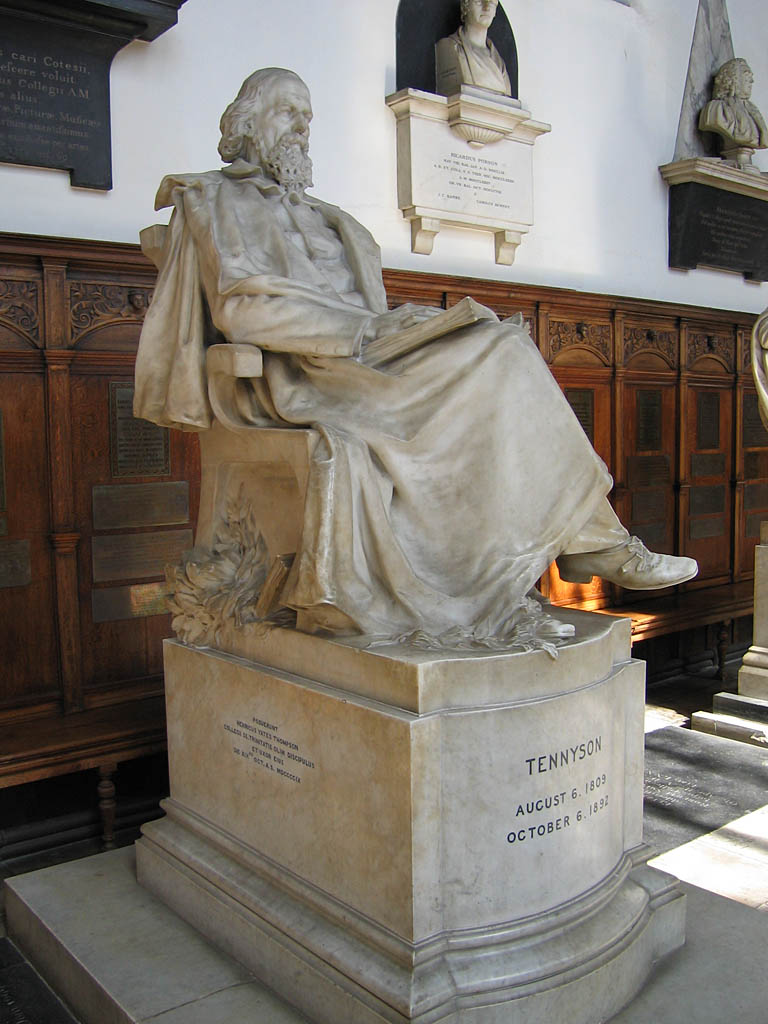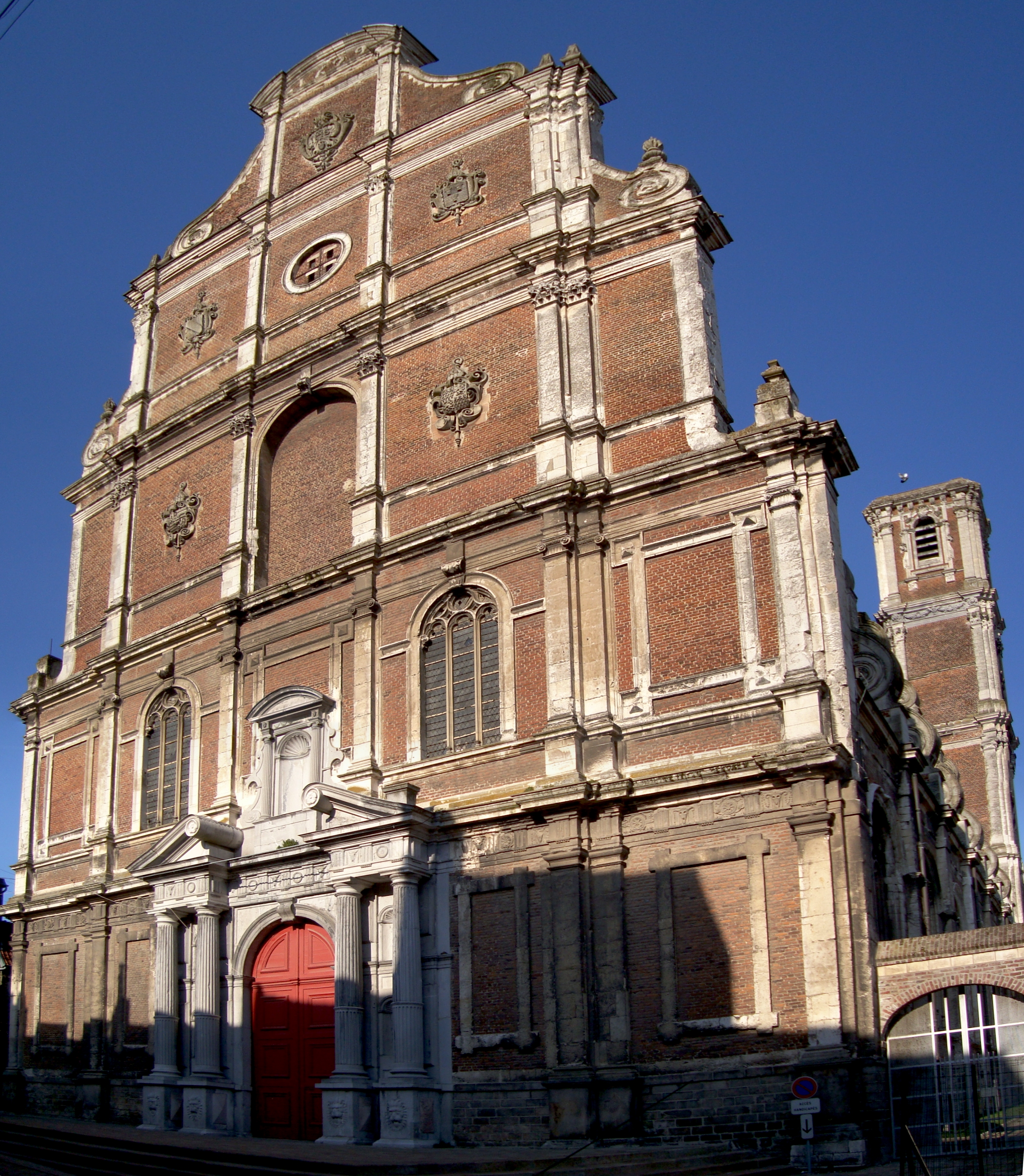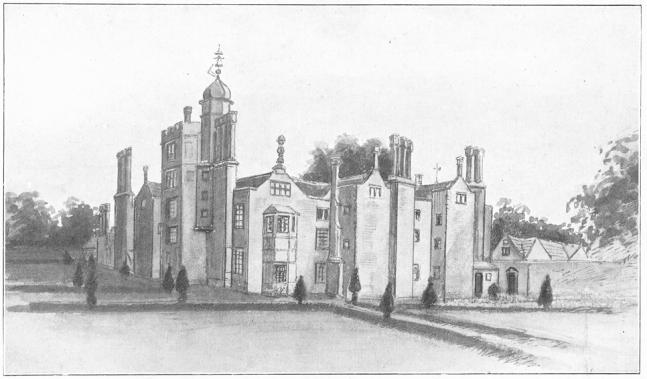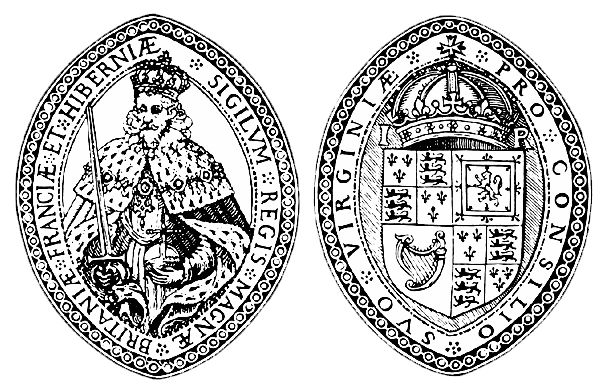|
William Parker, 4th Baron Monteagle
William Parker, 13th Baron Morley, 4th Baron Monteagle (15751 July 1622), was an English peer, best known for his role in the discovery of the Gunpowder Plot. In 1605 Parker was due to attend the opening of Parliament. He was a member of the House of Lords as Lord Monteagle, the title on his mother's side. He received a letter; it appears that someone, presumably a fellow Catholic, was afraid he would be blown up. The so-called Monteagle letter survives in the National Archives (SP 14/216/2), but its origin remains mysterious. Early life William was the eldest son of Edward Parker, 12th Baron Morley (died 1618), and of Elizabeth Stanley, daughter and heiress of William Stanley, 3rd Baron Monteagle (died 1581). He had both a younger brother, Charles, and a younger sister, Mary. William's father was a recusant, but appears to have been in favour at court; he was one of the noblemen who tried Mary, Queen of Scots. However, William was allied with many Roman Catholic families, a ... [...More Info...] [...Related Items...] OR: [Wikipedia] [Google] [Baidu] |
William Parker, 4th Baron Monteagle And 11th Baron Morley By John De Critz
William is a masculine given name of Norman French origin.Hanks, Hardcastle and Hodges, ''Oxford Dictionary of First Names'', Oxford University Press, 2nd edition, , p. 276. It became very popular in the English language after the Norman conquest of England in 1066,All Things William"Meaning & Origin of the Name"/ref> and remained so throughout the Middle Ages and into the modern era. It is sometimes abbreviated "Wm." Shortened familiar versions in English include Will, Wills, Willy, Willie, Liam, Bill, and Billy. A common Irish form is Liam. Scottish diminutives include Wull, Willie or Wullie (as in Oor Wullie or the play ''Douglas''). Female forms are Willa, Willemina, Wilma and Wilhelmina. Etymology William is related to the German given name ''Wilhelm''. Both ultimately descend from Proto-Germanic ''*Wiljahelmaz'', with a direct cognate also in the Old Norse name ''Vilhjalmr'' and a West Germanic borrowing into Medieval Latin ''Willelmus''. The Proto-Germanic name is a ... [...More Info...] [...Related Items...] OR: [Wikipedia] [Google] [Baidu] |
Robert Catesby
Robert Catesby (c. 1572 – 8 November 1605) was the leader of a group of English Catholics who planned the failed Gunpowder Plot of 1605. Born in Warwickshire, Catesby was educated in Oxford. His family were prominent recusant Catholics, and presumably to avoid swearing the Oath of Supremacy he left college before taking his degree. He married a Protestant in 1593 and fathered two children, one of whom survived birth and was baptised in a Protestant church. In 1601 he took part in the Essex Rebellion but was captured and fined, after which he sold his estate at Chastleton. The Protestant James I, who became King of England in 1603, was less tolerant of Catholicism than his followers had hoped. Catesby therefore planned to kill him by blowing up the House of Lords with gunpowder during the State Opening of Parliament, the prelude to a popular revolt during which a Catholic monarch would be restored to the English throne. Early in 1604 he began to recruit other Catholics to his ... [...More Info...] [...Related Items...] OR: [Wikipedia] [Google] [Baidu] |
Great Hallingbury
__NOTOC__ Great Hallingbury is a village and a civil parish in the Uttlesford District of Essex, England. The population of the civil parish at the 2011 census was 713. It is near the town of Bishop's Stortford, and the M11 motorway. Great Hallingbury contains houses from the Tudor period to modern. Decrease in population has resulted in the closure of the village school; its building and its accompanying playing field still exist, but are converted to housing and a grazing field. Great Hallingbury has a church dedicated to St Giles. Village groups include a Brownie club and the WI which meet in the Village Hall. There is an annual flower show organised by either Great Hallingbury or Little Hallingbury. William Parker, 4th Baron Monteagle, best known for his role in the discovery of the Gunpowder Plot, died in the village on 1 July 1622. At the edge of the village is the ancient Royal Hunting Forest and National Trust property Hatfield Forest. On 22 December 1999, Kore ... [...More Info...] [...Related Items...] OR: [Wikipedia] [Google] [Baidu] |
Alfred, Lord Tennyson
Alfred Tennyson, 1st Baron Tennyson (6 August 1809 – 6 October 1892) was an English poet. He was the Poet Laureate during much of Queen Victoria's reign. In 1829, Tennyson was awarded the Chancellor's Gold Medal at Cambridge for one of his first pieces, "Timbuktu". He published his first solo collection of poems, '' Poems, Chiefly Lyrical'', in 1830. "Claribel" and "Mariana", which remain some of Tennyson's most celebrated poems, were included in this volume. Although described by some critics as overly sentimental, his verse soon proved popular and brought Tennyson to the attention of well-known writers of the day, including Samuel Taylor Coleridge. Tennyson's early poetry, with its medievalism and powerful visual imagery, was a major influence on the Pre-Raphaelite Brotherhood. Tennyson also excelled at short lyrics, such as " Break, Break, Break", "The Charge of the Light Brigade", " Tears, Idle Tears", and " Crossing the Bar". Much of his verse was based on classica ... [...More Info...] [...Related Items...] OR: [Wikipedia] [Google] [Baidu] |
Edward Cranfield
Edward Cranfield (fl. 1680–1696) was an English colonial administrator. Cranfield was governor of the Province of New Hampshire from 1682 to 1685, in an administration that was marked by hostility between Cranfield and the colonists. Cranfield left New Hampshire in 1685 for Barbados Barbados is an island country in the Lesser Antilles of the West Indies, in the Caribbean region of the Americas, and the most easterly of the Caribbean Islands. It occupies an area of and has a population of about 287,000 (2019 estimate ..., where he was appointed commissioner of customs, where he introduced a 4.5% tax on sugar exports, and sat on the council in the 1690s. He died 1700 and is buried in Bath Cathedral. ppendix to Jeremy Belknapp's History of New Hampshire/ref> References ''Calendar of state papers''''English Colonies in America'' Date of birth unknown Date of death unknown 17th-century English people Colonial governors of New Hampshire Colony of Barbados ... [...More Info...] [...Related Items...] OR: [Wikipedia] [Google] [Baidu] |
John Savage, 2nd Earl Rivers
John Savage, 2nd Earl Rivers (25 February 1603 – 10 October 1654) was a wealthy English nobleman, politician and Royalist from Cheshire. Family A member of the Savage family, John was the first son of Thomas Savage, 1st Viscount Savage, and Elizabeth, daughter of Thomas Darcy, 1st Earl Rivers. He was born on 25 February 1603 and christened on 11 March 1603 in the parish of Saint Botolph without Bishopsgate, London. He succeeded to the Savage viscountcy in 1635 on the death of his father, and succeeded to the Rivers earldom on the death of his grandfather in 1640, by a remainder to his father and his heirs. By 1626, he had married Catherine, daughter of William Parker, 13th Baron Morley by his wife Elizabeth, daughter of Sir Thomas Tresham, and they had eight children, including: * Thomas, who succeeded as 3rd Earl Rivers * Jane, who married firstly George Brydges, 6th Baron Chandos, secondly Sir William Sidley, 4th Baronet, and thirdly George Pitt * Elizabeth, who marri ... [...More Info...] [...Related Items...] OR: [Wikipedia] [Google] [Baidu] |
Colleges Of St Omer, Bruges And Liège
The Colleges of St Omer, Bruges and Liège were successive expatriate institutions for Roman Catholic higher education run by the Jesuits for English students. Founded in 1593 by Father Robert Parsons SJ as the College of Saint-Omer in Artois (then part of the Spanish Netherlands),Robert Parsons '' Catholic Encyclopaedia'' (1913). Retrieved 9 July 2008 in the 18th century the college was twice forced to relocate, due to the suppression of the Jesuit order in France. In 1762 most masters and students moved to and in 1773 on to Liège, leaving a smaller college surviving in St Omer. In 1774, th ... [...More Info...] [...Related Items...] OR: [Wikipedia] [Google] [Baidu] |
Hindlip Hall
Hindlip Hall is a stately home in Hindlip, Worcestershire, England. The first major hall was built before 1575, and it played a significant role in both the Babington and the Gunpowder plots, where it hid four people in priest holes. It was Humphrey Littleton who told the authorities that Edward Oldcorne was hiding here after he had been heard saying Mass at Hindlip Hall.Humphrey Littleton , gunpowder-plot.org, accessed 7 July 2008 Four people were and the owner at that time barely escaped execution himself due to the intercession of Lord Monteagle. It was later owned by a ... [...More Info...] [...Related Items...] OR: [Wikipedia] [Google] [Baidu] |
Virginia Company
The Virginia Company was an English trading company chartered by King James I on 10 April 1606 with the object of colonizing the eastern coast of America. The coast was named Virginia, after Elizabeth I, and it stretched from present-day Maine to the Carolinas. The company's shareholders were Londoners, and it was distinguished from the Plymouth Company, which was chartered at the same time and composed largely of gentlemen from Plymouth, England. The biggest trade breakthrough resulted after adventurer and colonist John Rolfe introduced several sweeter strains of tobacco from the Caribbean. These yielded a more appealing product than the harsh-tasting tobacco native to Virginia. Cultivation of Rolfe's new tobacco strains produced a strong commodity crop for export for the London Company and other early English colonies and helped to balance a national trade deficit with Spain. The company failed in 1624, following the widespread destruction of the Great Massacre of 16 ... [...More Info...] [...Related Items...] OR: [Wikipedia] [Google] [Baidu] |
Robert Cecil, 1st Earl Of Salisbury
Robert Cecil, 1st Earl of Salisbury, (1 June 156324 May 1612), was an English statesman noted for his direction of the government during the Union of the Crowns, as Tudor England gave way to Stuart rule (1603). Lord Salisbury served as the Secretary of State of England (1596–1612) and Lord High Treasurer (1608–1612), succeeding his father as Queen Elizabeth I's Lord Privy Seal and remaining in power during the first nine years of King James I's reign until his own death. The principal discoverer of the Gunpowder Plot of 1605, Robert Cecil remains a controversial historic figure as it is still debated at what point he first learned of the plot and to what extent he acted as an '' agent provocateur''. Early life and family Cecil (created Earl of Salisbury in 1605) was the younger son of William Cecil, 1st Baron Burghley by his second wife, Mildred Cooke, eldest daughter of Sir Anthony Cooke of Gidea Hall, Gidea, Essex. His elder half-brother was Thomas Cecil, 1 ... [...More Info...] [...Related Items...] OR: [Wikipedia] [Google] [Baidu] |
Hoxton
Hoxton is an area in the London Borough of Hackney, England. As a part of Shoreditch, it is often considered to be part of the East End – the historic core of wider East London. It was historically in the county of Middlesex until 1889. It lies immediately north of the City of London financial district, and was once part of the civil parish and subsequent Metropolitan Borough of Shoreditch, prior to its incorporation into the London Borough of Hackney. The area is generally considered to be bordered by Regent's Canal on the north side, Wharf Road and City Road to the west, Old Street to the south, and Kingsland Road to the east. There is a Hoxton electoral ward which returns three councillors to Hackney London Borough Council. The area forms part of the Hackney South and Shoreditch parliamentary constituency. Historical Hoxton Origins "Hogesdon" is first recorded in the Domesday Book, meaning an Anglo-Saxon farm (or "fortified enclosure") belonging to ''Hoch'', ... [...More Info...] [...Related Items...] OR: [Wikipedia] [Google] [Baidu] |
Guy Fawkes
Guy Fawkes (; 13 April 1570 – 31 January 1606), also known as Guido Fawkes while fighting for the Spanish, was a member of a group of provincial English Catholics involved in the failed Gunpowder Plot of 1605. He was born and educated in York; his father died when Fawkes was eight years old, after which his mother married a recusant Catholic. Fawkes converted to Catholicism and left for mainland Europe, where he fought for Catholic Spain in the Eighty Years' War against Protestant Dutch reformers in the Low Countries. He travelled to Spain to seek support for a Catholic rebellion in England without success. He later met Thomas Wintour, with whom he returned to England. Wintour introduced him to Robert Catesby, who planned to assassinate and restore a Catholic monarch to the throne. The plotters leased an undercroft beneath the House of Lords; Fawkes was placed in charge of the gunpowder that they stockpiled there. The authorities were prompted by an anonymous lett ... [...More Info...] [...Related Items...] OR: [Wikipedia] [Google] [Baidu] |





_001.jpg)